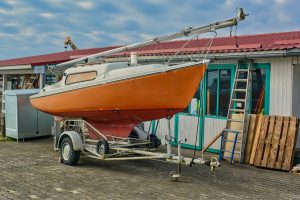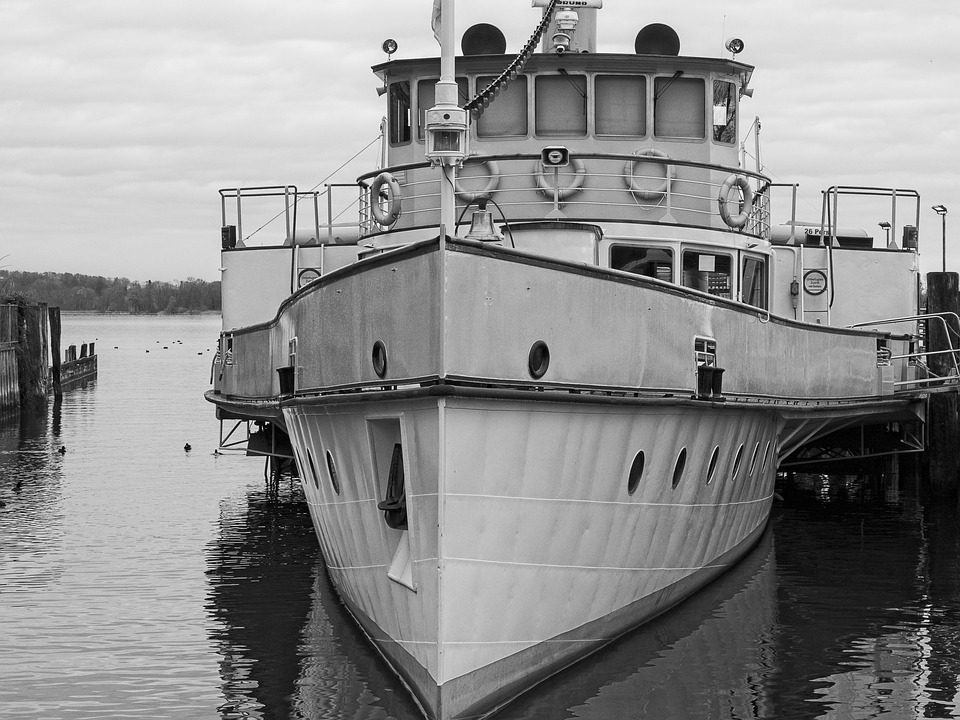July 11, 2022
Learn the Basics of Trailering a Boat

Photo by Antranias under Pixabay License
Boaters who use trailers are free to boat on just about any river, lake, inlet, or bay. Besides getting a chance to explore various waterways in their region or state, these boating enthusiasts don’t have to spend much on boat storage either.
If you’re looking to take your vessel to exciting and far-flung cruising grounds and launch at ramps close to your favorite fishing spots, you should learn the steps of trailering a boat.
Trailering a Boat: A Step-by-Step Guide
For most boaters, trailer boating makes more sense than leaving their marine vessels in the water at a pier or marina. While pulling a trailer with a boat may have several safety and maintenance concerns, there’s no need to worry once you figure out the basics. Before you set out on your next aquatic adventure, Veteran Car Donations shares this step-by-step guide for trailering your boat.
- STEP 1: Check the vehicle’s towing capacity.
You can check your vehicle’s towing capacity by consulting your owner’s manual. In most cases, small or mid-sized sedans can handle 10- to 17-foot range fiberglass or aluminum boats with no issues. For boats above 20 feet, you’ll need more robust equipment such as standard SUVs and pick-up trucks to ensure safe towing. It’s important to note that unless these vehicles are outfitted with proper tow packages, they can’t trail bigger boats comfortably.
- STEP 2: Align the hitch and ball before lowering the trailer hitch down over the ball.
The ball hitch and coupler are the basic equipment for attaching your boat trailer to your tow vehicle. Moreover, the coupler is responsible for connecting the tow vehicle to the trailer as it fits over and locks to the ball hitch. Once you’ve ensured that the size of your tow vehicle is appropriate for the vessel being towed, be sure to align the hitch and ball before you lower the trailer hitch down over the ball.
- STEP 3: Close the latch before inserting the safety pin.
You shouldn’t tow your vessel without a safety pin for the coupler. Once you’ve closed the latch, you’d want to have the safety pin in place. Otherwise, the hitch could pop off the ball when you hit a bump on the road.
- STEP 4: Cross the safety chains before you attach them to your tow vehicle.
Safety chains are responsible for connecting the trailer to the ball hitch assembly. Should the ball hitch and coupler disengage, they’ll keep the trailer attached to the tow vehicle. For this reason, your towing gear should include safety chains long enough to attach to your tow vehicle. Furthermore, they should be crisscrossed from the vessel to the tow vehicle to keep them strong enough to support the trailer tongue and prevent it from digging into the asphalt if the coupler fails.
- STEP 5: Attach the safety cable to your tow vehicle.
Don’t forget to attach the safety cable to your towing vehicle if your trailer has brakes. Doing so will help engage the brakes in case your trailer comes free from your vehicle.
- STEP 6: Run a full check on the lights.
Plug your lights in to check if your brake blinker, as well as your taillights and hazards, are all working. Keep an eye out for loose connections and cracks.
Use Your Old Boat to Transform the Lives of Our Heroes
If your boat has already had its fair share of glory days and is no more use to you now, consider donating it to us at Veteran Car Donations. We’ll transform it into a powerful tool for transforming the lives of the disadvantaged and neglected veterans in your area. They’re those former service members who are homeless and unable to find decent jobs as well as those who are suffering from disabilities and serious illnesses, including mental disorders.
We serve as the online vehicle donation platform of IRS-certified 501(c)(3) nonprofit organizations that are fully committed to serving our nation’s struggling veterans. We sell vehicles donated to us and use the proceeds to support the life improvement programs for veterans of these nonprofits.
The funding helps these nonprofits in providing their beneficiaries with free quality health care and medical treatments, financial aid, housing assistance, employment opportunities, family support, educational scholarships, psychotherapy services, and many other benefits.
As a donor, you get to enjoy valuable perks, one of which is getting entitled to claim the maximum tax deduction in the next tax season. You also don’t need to pay for our pickup and towing service. We offer them for free to our donors in all parts of the United States.
Above all, you’ll have the ultimate pleasure and satisfaction of doing something extraordinary that can help uplift the lives of our nation’s heroes.
We take almost all types of vehicles regardless of their age or condition. Apart from boats, we accept cars, RVs, motorcycles, mopeds, jet skis, golf carts, snowmobiles, company trucks, and many others. They don’t even have to be in good condition.
For more information on our vehicle donation program, visit our FAQs page. Should you have any inquiries or concerns, feel free to call us anytime through our toll-free hotline at 877-594-5822 or write to us here.
Ready to Turn Your Vessel Into a Powerful Life-Changing Tool?

Photo by Antranias under Pixabay License
You can turn your no-longer-needed boat or any other type of vehicle into a powerful instrument for transforming the lives of our hurting heroes. Don’t miss this chance to show your gratitude and appreciation to them. Call Veteran Car Donations at 877-594-5822 or fill out this form to make your donation now!
Last Updated: March 8th, 2023
